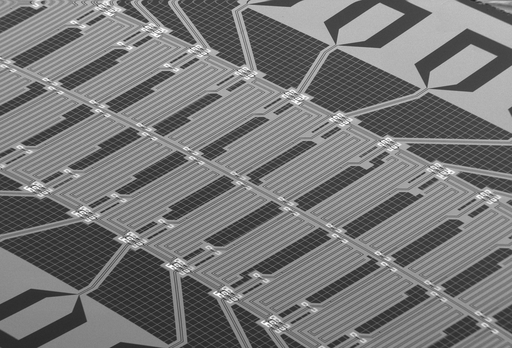Sensors used in monitoring infrastructures, like bridges or buildings, or used in medical devices need constant power to work. Their energy usually comes from batteries, which are replaced when they are empty, creating a severe waste problem. An EU study predicts that by 2025, about 78 million batteries will be discarded globally every day if nothing is done to improve their lifespan.

Sound-Reacting Sensors
At ETH Zurich, a team of researchers led by Marc Serra-Garcia and geophysics professor Johan Robertson developed a new type of mechanical sensor that can remedy problems in disposable batteries. The result of their study is presented in the paper "In-Sensor Passive Speech Classification with Phononic Metamaterials."
The new sensor works by generating vibrational energy from sound waves. The energy of the waves causes the sensor to vibrate and produce electricity, which can power electronic devices. Since it works entirely mechanically, the sensor does not need an external energy source.
The researchers used computer modeling and algorithms to develop a special structure for the sensor made of identical plates connected by tiny bars. This allows them to avoid excessive charging. The tiny bars also determine whether a certain sound will set the sensor in motion.
The device can distinguish between the spoken words "three" and "four." Since the word "four" has more sound energy resonating with the sensor compared to the word "three", it causes vibration in the sensor, something that cannot be done by the word "three". This means that the word "four" can act as a switch on a device or trigger further processes. Meanwhile, nothing would happen with the word "three.".
Newer versions of the sensor can distinguish between up to 12 words, like "on", "off", "up" and "down". Unlike the palm-sized prototype, these versions are much smaller, about the size of a thumbnail. In the future, the research team aims to miniaturize the battery-free sensor further.
READ ALSO: First Time in the World: Demonstration of Ultra Pressure Sensor Attached to the Fingertips
The Dawn of Metamaterials
Sensors developed with this kind of technology are categorized as metamaterial, a medium where the special properties are given not by the material used but by the structure.
In this new study, the sensor consists of silicone and does not contain toxic heavy or rare earth metals, as current electronic sensors do. They are made of dozens of identical or similarly structured plates connected by tiny bars.
These battery-free sensors show potential in earthquake or building monitoring, as they can register when an establishment develops a crack with the right sound or wave energy.
Experts also express interest in using these sensors to monitor decommissioned hissing sounds. This device can detect hissing and trigger an alarm without consuming electricity constantly. This technology is found to be cheaper and requires less maintenance.
The research team also sees applications of their sensor in medical devices, such as cochlear implants. Conventional hearing devices require a permanent power source from batteries to process signals. Since they are behind the ear, there is no room for large battery packs. This means that the users of such devices need to replace the batteries every 12 hours.
RELATED ARTICLE: Low-Cost Novel Sensor Can Quickly Diagnose Heart Attack in Just 30 Minutes, Better Than Current Methods
Check out more news and information on Sensor in Science Times.














